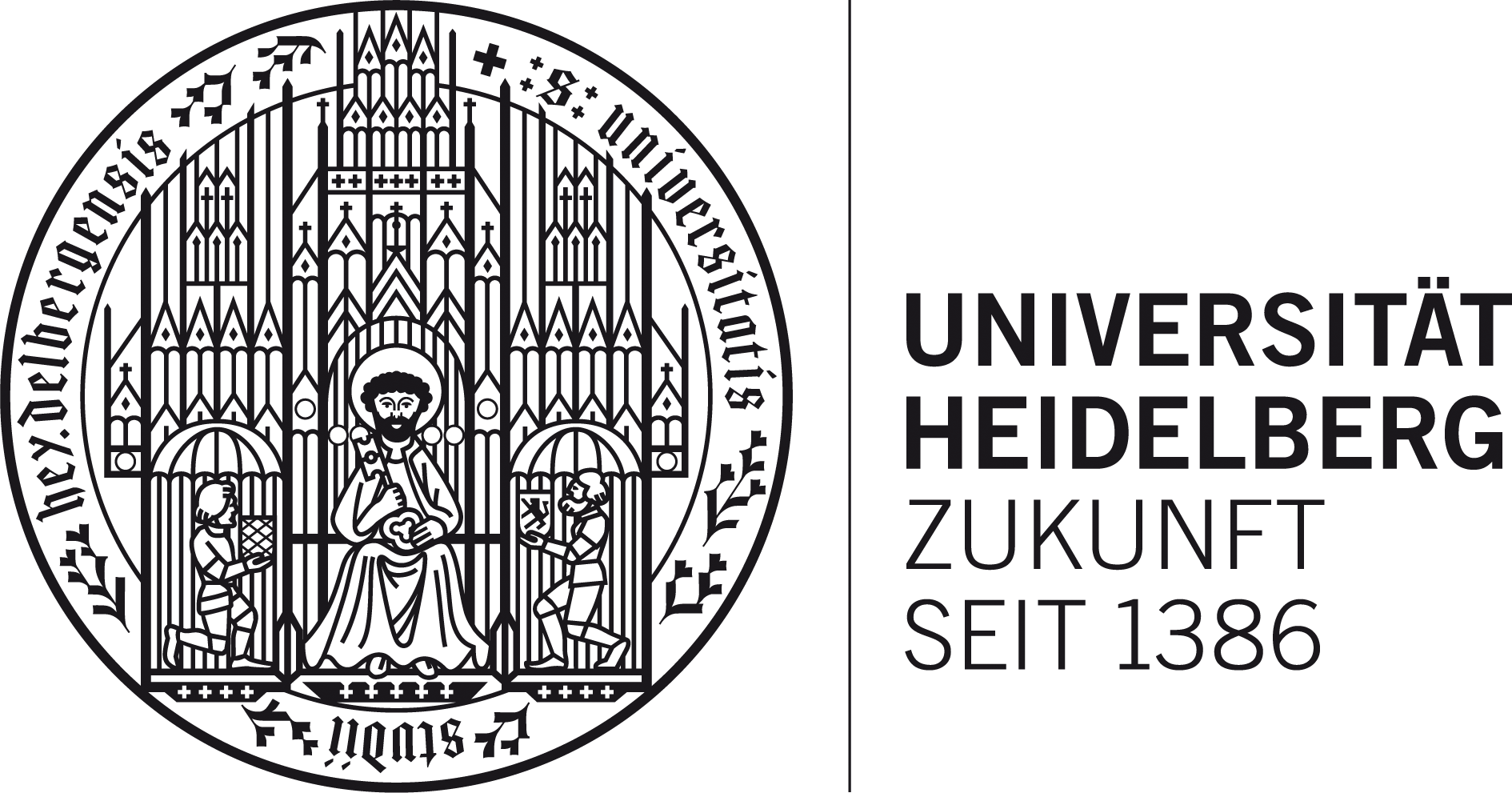ICHL26
Daily sessions (by last name)
Day 1: Monday, September 4
Registration begins at 8:00 in the ↗︎ New University building (Neue Universität).
Monday's plenary talk takes place in the “Alte Aula” on the first floor of the ↗︎ Old University building (Alte Universität), after that all lectures are in the New University building.
D1: General sessions
D1: Workshops
Day 2: Tuesday, September 5
D2: General sessions
D2: Workshops
Day 3: Wednesday, September 6
D3: General sessions
Day 4: Thursday, September 7
D4: General sessions
D4: Workshops
W6 – Grestenberger et al.Categorizers in diachrony Room: H4 |
Room: H12 | W10 – Baudel et al.The (Pre)History of the Languages of Japan – Current issues and prospects Room: H12a |
|
|---|---|---|---|
12:30–13:30 |
Lunch break |
||
13:30–14:00 |
|||
14:00–14:30 |
Shimabukuro[W10.2] Debuccalization of *p in the Naha dialect of the Ryukyuan language |
||
14:30–15:00 |
Kinuhata[W10.3] Reconstructing the Proto-Japonic demonstrative system |
||
15:00–15:30 |
Hasselbach-Andee[W6.3] One or All: The Development of Singulatives to Collectives in Semitic |
Baudel[W10.4] Reconsidering the classification of Hachijō: A glimpse from historical phonology |
|
15:30–16:00 |
Break |
||
16:00–16:30 |
|||
16:30–17:00 |
Discussion |
Baudel et al.[W10.6] The (Pre)History of the Languages of Japan – Current issues and prospects |
|
17:00–17:30 |
|||
17:30–18:00 |
|||
Day 5: Friday, September 8
D5: General sessions
|
Language contacts Room: H9, |
Internal reconstruction Room: H6, |
Mood and modality Room: H12 |
Reconstruction and periodization Room: H8 |
Language corpora Room: H5 |
|---|---|---|---|---|---|
09:00–10:00 |
John Charles Smith[PL7] Fifty years of ICHL, 1973–2023 (New Aula) |
||||
10:00–10:30 |
Coffee break |
||||
10:30–11:00 |
Burns[146] Towards Quantifying Social Behavior in Language Contact |
Bauer [191] Complexity in counting systems: early systems vs. modern numerical ones |
|||
11:00–11:30 |
Iezzi[108] The role of French in the Johnsons’ correspondence |
Sapp et al.[207] Another look at Noun-Genitive vs. Genitive-Noun in Early New High German |
Billing & Elgh[178] Computational Anatolian phylogeny using maximum parsimony |
||
11:30–12:00 |
Elter[183] Anglo-Scandinavian Contact Influence on Verbs Entering the Causative Alternation |
Schützler[35] Third-person verb inflection in Shakespeare’s dramatic texts |
|||
12:00–12:30 |
Reinöhl & Ellison[190] Metaphor, Overtness and Word Order Routinization |
||||
12:30–13:30 |
Lunch break |
||||
13:30–14:00 |
Capano [237] It Ain't Over till It's Over. Bilingualism and language decay in Sicilian inscriptions |
Kayenbergh & De Smet[89] Just a bystander? Semantic change in the English simple tenses |
Assenzi[145] Hearsay in Historical German Newspapers (1740–1840) |
Swanenvleugel[290] The Sardinian substrate lexicon and its Mediterranean comparanda |
Nieder & Tomaschek[174] Classifying the origin of Maltese nouns – A cross-language approach employing phonotactics |
14:00–14:30 |
Hirvonen[200] Contact-induced change of Negative Indefinites – the case of Meadow Mari |
Gunnink et al.[232] An evolutionary loner in Southern African Bantu: The classification of Yeyi |
Cattafi[264] Continuative relative clauses in Greek documentary papyri |
||
14:30–15:00 |
van Dam[41] Internal subgrouping of Northern Naga based on Bayesian phylogenetic analysis |
|
Hernáiz[215] Exploring language variation and change in the distant past |
||
15:00–15:30 |
Olguín-Martínez[25] The areality of the consecutive pattern in Mesoamerican languages |
|
Franco[168] Explaining the speed of lexical change in historical Dutch |
||
15:30–16:00 |
Farewell reception |
||||
16:00–16:30 |
|||||
16:30–17:00 |
|
||||
17:00–17:30 |
|||||
17:30–18:00 |
|||||
D5: Workshops
W8 – Karim & GholamiFilling in the diachronic gaps: the view of Old Iranian from the present Room: H2 |
W11 – Auderset et al.The diachrony of tone: connecting the field Room: H12a |
W14 – Jäger et al.Exploiting Standardized Cross-Linguistic Data in Historical Linguistics Room: H1 |
|
|---|---|---|---|
10:00–10:30 |
Coffee break |
||
10:30–11:00 |
Karim & Gholami[W8.1] Filling in the diachronic gaps: the view of Old Iranian from the present |
Božović[W11.1] Tone, stress and length interactions in Central Neo-Štokavian |
Jäger et al.[W14.1] Exploiting Standardized Cross-Linguistic Data in Historical Linguistics |
11:00–11:30 |
Kreidl[W8.2] Bactrian influence on local languages of Eastern Afghanistan |
Lionnet[W11.2] Accent and tone: the double origin of the Paicî tone system |
|
11:30–12:00 |
Rzymski[W14.3] From Old Data to Fresh Phylogenies — A Linguistic Data Journey in the Times of CLDF |
||
12:00–12:30 |
Mohammadirad[W8.4] Remarks on the category of copula in Gorani dialects |
Arnold[W11.4] Tone splits from vowel height in the Austronesian language of Raja Ampat |
Forkel & Greenhill[W14.4] Phlorest: A Database of Consistent and Reusable Language Phylogenies |
12:30–13:30 |
Lunch break |
||
13:30–14:00 |
Gholami & Naghshbandi[W8.5] Polyptoton for the purpose of emphasizing within Iranian languages |
Grimm[W11.5] A diachronic study of grammatical tone in northwestern Bantu |
Dellert & Blaschke[W14.5] Configurable Language-Specific Tokenization for CLDF Databases |
14:00–14:30 |
Belelli[W8.6] A historical-comparative glimpse on Laki dialects |
Blum & List[W14.6] A computational evaluation of regularly recurring sound correspondences |
|
14:30–15:00 |
|||
15:00–15:30 |
Auderset & Dockum[W11.8] The diachrony of tone: connecting the field |
Discussion |
|
15:30–16:00 |
Farewell reception |
16:00–16:30 |
|

